Keith Haring
Born on May 4th 1958, in Reading, Pennsylvania, USA, Keith Haring was raised in nearby Kutztown, Pennsylvania. From a young age, he developed a passion for drawing, learning basic cartooning skills from his father and drawing inspiration from popular culture icons like Dr. Seuss and Walt Disney. After graduating from high school in 1976, Haring attended the Ivy School of Professional Art in Pittsburgh but soon realised that he had little interest in becoming a commercial graphic artist. He dropped out after two semesters and continued to study and work on his own.
In 1978, following a solo exhibition of his work at the Pittsburgh Arts and Crafts Center, Haring moved to New York City and enrolled in the School of Visual Arts (SVA). Immersed in the vibrant art community of downtown New York, he became fascinated with the city's graffiti culture. Haring began participating in exhibitions and performances outside of traditional gallery and museum spaces, at alternative venues like Club 57 where he befriended fellow artists Kenny Scharf, Jean-Michel Basquiat, and Andy Warhol, as well as musicians, performance artists, and photographers. Notably, photographer and performance artist Tseng Kwong Chi, who documented much of Haring's career through over 20,000 photographs.
While a student at SVA, Haring explored various art forms but remained dedicated to drawing. He drew influence from artists such as Jean Dubuffet, Pierre Alechinsky, and Andy Warhol, as well as the public and participatory nature of Christo's work. Haring was determined to create truly public art and devoted his career to this pursuit. In 1980, he discovered a highly effective medium for reaching a wider audience when he began creating white chalk drawings on blank advertising panels in the New York City subway system. These public drawings, known as "subway drawings", became familiar to commuters and allowed Haring to engage directly with people.
From 1980 and 1989, Haring gained international recognition and participated in numerous group and solo exhibitions, and produced more than 50 public artworks that are found from New York to Paris. Haring’s art - drawings, paintings, and murals - were characterised by bold lines, bright colours, and a repertoire of iconic images such as dancing figures, radiant babies, and barking dogs, infused with uncommon energy and optimism. By expressing universal concepts of birth, death, love, sex, and war through his art, Haring created a lasting visual language that has been embraced worldwide.
In 1986, he opened the Pop Shop, a retail store in SoHo, New York, where affordable merchandise featuring his art was sold. This decision faced criticism within the art world, as it was seen as a compromise of artistic integrity. Despite the criticisms, another Pop Shop opened in Tokyo, and the NYC shop continued operating until 2005, when it shifted its focus to an online platform.
While Haring's visual language was significant, his activism was equally central to his practice. He used his art to raise awareness about social issues such as apartheid, the AIDS crisis, and environmental destruction. In 1988, he was diagnosed with AIDS and established the Keith Haring Foundation to support AIDS organisations and children's programs. Notable works associated with his activism include the Crack is Whack mural in Harlem in a spot meant for advertising in the subway, the poster Ignorance = Fear, and many untitled pieces that his iconic body of work encompasses.
Keith Haring passed away on the 16 February 1990, at the age of 31 due to AIDS-related complications. Haring's unique style and his messages of love, social justice, and individual freedom have made a lasting impact on the art world and society as a whole, as his art continues to be exhibited worldwide and is held in major museum collections.
Recent solo exhibitions of Keith Haring's work have been held at the Stedelijk Museum in Amsterdam in 2023, the National Gallery of Victoria in Melbourne in 2020, the Tate Liverpool in 2019, the Albertina in Vienna in 2018, the De Young Museum in San Francisco in 2014, the Musée d'Art Moderne de la Ville de Paris in 2013, the Museum of Contemporary Art in Lyon, France in 2008, and at the Fundación Caixa Galicia in Ferrol, Spain in 2007. He also had exhibitions in major institutions such as the Guggenheim Museum in New York, the Museum Boijmans van Beuningen in Rotterdam, and the Kunsthalle in Cologne. His works can be found in the collections of The Museum of Modern Art in New York, the Los Angeles County Museum of Art, the Art Institute of Chicago, and the Smithsonian American Art Museum in Washington, D.C. among others.

SELECTED WORKS
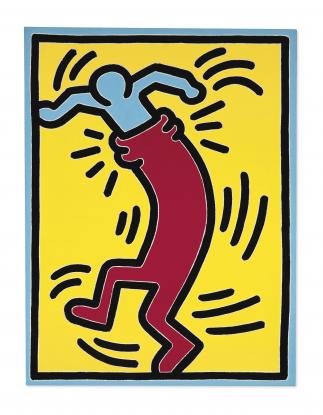
Keith Haring, Untitled, 1988
Acrylic on canvas
122 x 91,5 cm | 48 x 36 in
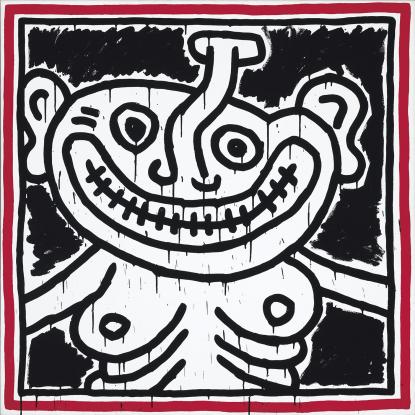
Keith Haring, Untitled, 1985
Acrylic on canvas
121,9 x 121,9 cm | 48 x 48 in
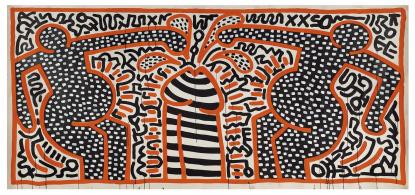
Keith Haring, Untitled (May 24-83), 1983
Acrylic on paper
182,9 x 376,9 cm | 72 x 148.3 in
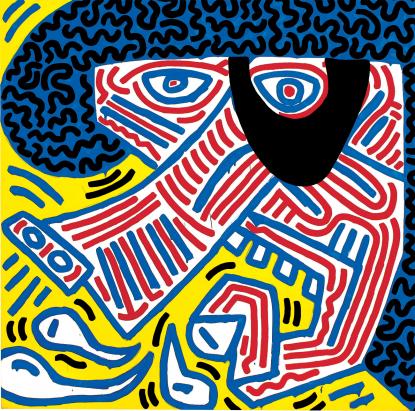
Keith Haring, Sneeze (via Picasso), 1984
Acrylic on canvas
152,5 x 152,5 cm | 60 x 60 in

Keith Haring, Growing, 1988
76,2 x 101,6 cm | 30 x 40 in
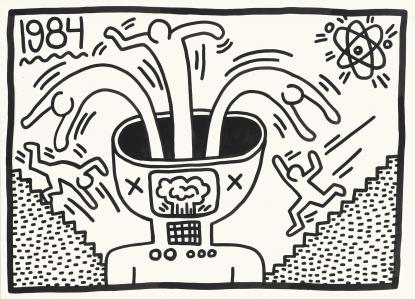
Keith Haring, Untitled, 1984
Sumi ink on paper
79 x 108,9 cm | 31.1 x 42.9 in
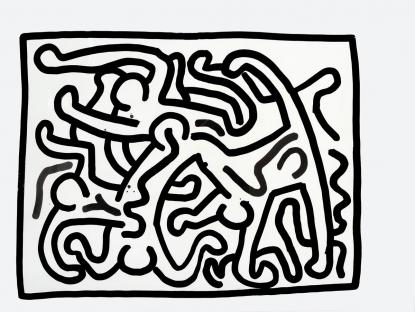
Keith Haring, Untitled #16, 1988
Sumi ink on paper
76,2 x 101,6 cm | 30 x 40 in

Keith Haring, For Honda, 1987
White marker on black paper
62,5 x 48 cm | 24.6 x 18.9 in
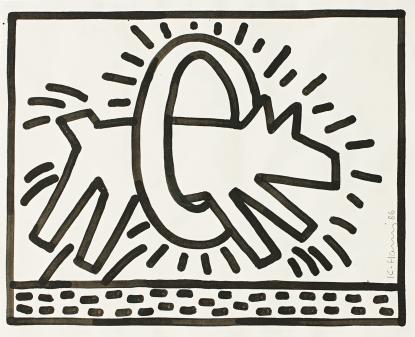
Keith Haring, Untitled, 1986
Sumi ink on paper
32,4 x 40,2 cm | 12.8 x 15.8 in
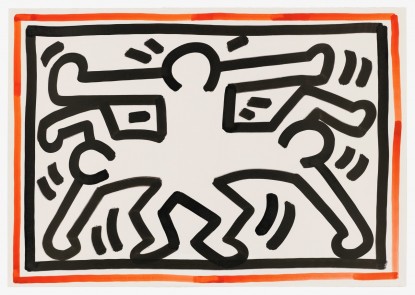
Keith Haring, Untitled 8.8.88, 1988
Ink on paper
70 x 100 cm | 27.6 x 39.4 in
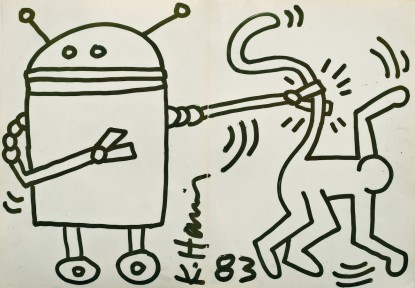
Keith Haring, Untitled, 1983
Ink on paper
47 x 66 cm | 18.5 x 26 in

Keith Haring, Red-Yellow-Blue #9, 1987
Oil and acrylic on canvas
91,5 x 91,5 cm | 36 x 36 in